



















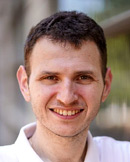








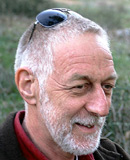
































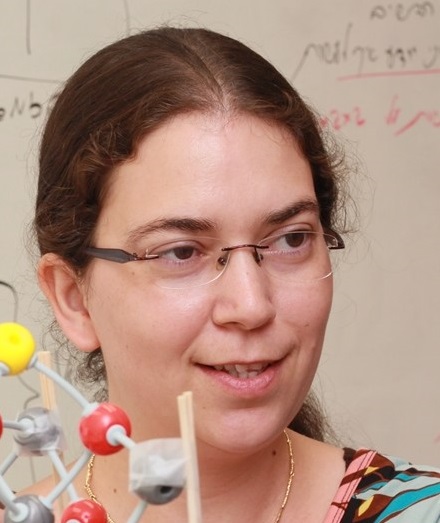








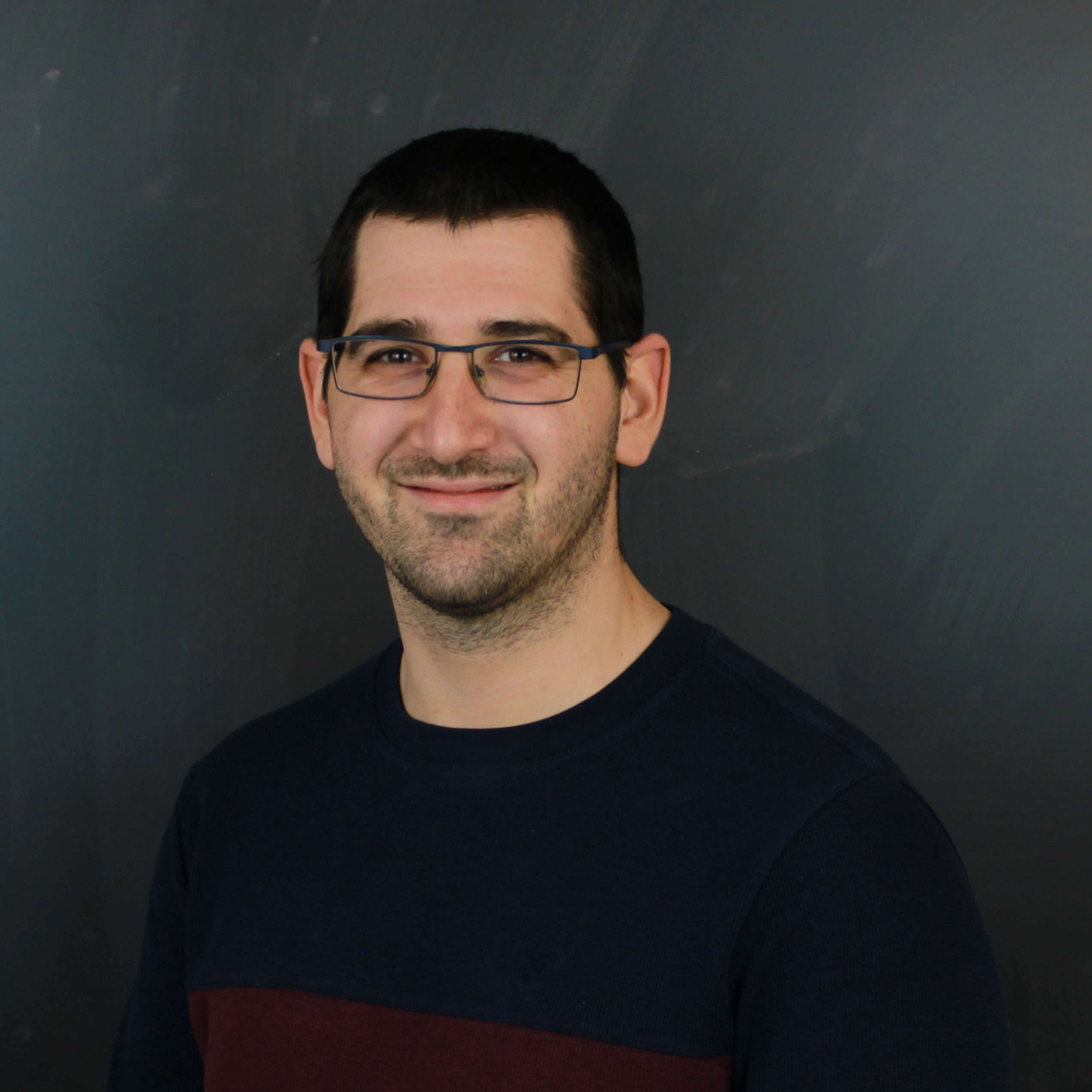





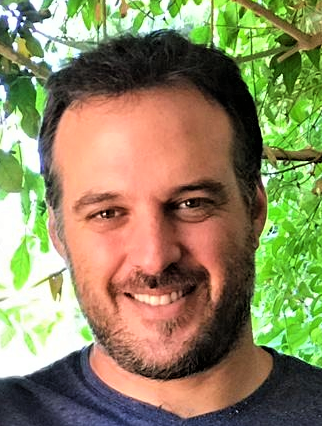































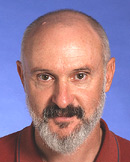





















MAPF is an NP-hard problem. We are given a large pre-calculated set of paths. The aim is to select paths from this set such that they do not collide with static obstacles nor with each other. This selection should be calculated in near real-time, i.e., extremely faster than classic MAPF algorithms.
We investigate how Deep-Learning methods may speed up the search process. We train the NN to recognize patterns in the training examples and apply them to previously unseen settings of the problem.
The challenge of mapping indoor environments is addressed. Frontier-based methods calculation time may increase substantially as more areas are exposed. To overcome this limitation, we apply deep reinforcement learning to train the motion planner, and pre-trained generative deep neural network, acting as a map predictor. Hence, we improve the decision making through use of the learned structural statistics of the environment and ensure a constant calculation time. We show that combining the two methods can shorten the duration of the mapping process substantially.
This report, written under the supervision of Professor Alfred M. Bruckstein as part of a doctoral dissertation, surveys results on distributed systems comprising mobile agents that are identical and anonymous, oblivious and interact solely by adjusting their motion according to the relative location of their neighbours. The agents are assumed capable of sensing the presence of other agents within a given sensing range and able to implement rules of motion based on partial information on the geometric constellation of their neighbours.
We aim to enable touching of digital media, such as images and virtual objects. Imagine being able to touch the sofa your avatar is going to sit on, or letting blind people “see’’ images through their fingers. We are developing a complete haptic system for tactile sensing and already have a device that simulates sensation of surface geometry and texture. Next challenge is to figure out how to transform images to surfaces that people will touch and understand the content.
In many problems in computer vision, collecting data for training and testing is hard or even impossible. For example, it is notoriously hard to annotate videos, and as a result autonomous driving platforms use synthetically generated videos. In our research we explore multiple facets of handling the lack of data. We explore methods for differentiable data augmentation, completing missing annotations, generating synthetic images, and more.
The vast amount of code available on the web is increasing on a daily basis. Open-source hosting sites such as GitHub contain billions of lines of code. Community question-answering sites provide millions of code snippets with corresponding text and metadata. The amount of code available in executable binaries is even greater. We explore techniques for learning from such “big code” and leveraging the learned models for program analysis, program synthesis and reverse engineering. Along the way, we explore a range of symbolic and neural program representations (e.g., symbolic automata, tracelets, and numerical abstractions), as well as different neural models.
What is the computational model behind a Transformer?
Where recurrent neural networks have direct parallels in finite state machines, allowing clear discussion and thought around architecture variants or trained models, Transformers have no such familiar parallel. We explore different symbolic representations for reasoning about transformers and a programming language that can be used to “program” transformers.
Understanding the chemical stability of active pharmaceutical molecules can affect the quality, safety, robustness, and efficacy of a drug product. The ultimate goal of this project is to develop a predictive tool for drug resistance to oxidation and degradation to facilitate early developmental efforts of potential pharmaceuticals, even before they are synthesized. We use detailed chemical kinetic models automatically generated with on-the-fly quantum chemical thermo-kinetic computations.
Design of an AI tool able to attain a fuel mixture composition that possesses specific desirable combustion characteristics. Given a constrained chemical search space and a target function (e.g., ignition delay time), this tool will predict which fuel composition is optimal for the task. This tool will intelligently design a wide range of fuel systems efficiently, attaining experimentally-validated results, while at the same time reducing the amount of required experiments and resources.
This project focuses on attaining robust proton-exchange membranes (PEMs) for high-temperature fuel cells. The key challenge with today’s PEMs at high temperature oxidative environments is that they degrade too quickly, resulting in an unacceptably low operation time of the overall device. We generate detailed chemical kinetic models for the degradation of these materials, and use neural networks to predict new polymer structures with low degradation rates at these extreme operation conditions.
The mathematical theory of voting goes back at least 240 years to the Condorcet Jury Theorem, and mainly deals with the question of finding a rule, or a “function” that best aggregates the preferences of many people. Yet the implicit underlying assumption, that all (or even most) people actually vote is rarely met in practice. We quantify the bias in the outcome as more people fail to vote, and study the effect of possible remedies such as voting by proxy.
Truth discovery is a general name for statistical methods aimed to extract the correct answers to questions, based on multiple answers coming from noisy sources. For example, workers in a crowdsourcing platform. We suggest a simple heuristic for estimating workers’ competence using average proximity to other workers. We prove this estimates well the actual competence level and enables separating high and low quality workers in a wide spectrum of domains and statistical models.
Power companies such as Southern California Edison (SCE) uses Demand Response (DR) contracts to incentivize consumers to reduce their power consumption during periods when demand forecast exceeds supply. We design mechanisms that take into consideration consumers’ heterogeneity in consumption profile and reliability, and increase participation at a lower cost.
The project combines my two principal areas of specialization: (1) architecture history of housing as a large-scale, multifaceted phenomenon; and (2) developing machine-vision archival capabilities for the built environment. Combining methods of computation in architecture with the historiography of the built environment, I attempt to develop an empirical approach to the study of vast urban landscapes using computational capacities. I aim to analyze vast volumes of building data in images, replacing textual keyword labelling by content-based semantic ‘reading’. I use the large corpus of building images from Google Street View to train a convolutional neural network (CNN) model which can identify architectural features in façade images.
We extracted information from hospital medical records and designed a personal platform through which patients could receive information about what they can expect regarding the type of tests and treatments and the expected duration of their hospital stay. We assess the effects of the offered information on patient satisfaction, duration of stay and duration of treatments.
This research aims at exploring the impacts of mixed-use and mixed-typology configurations on energy performance (i.e., supply, demand, and the balance between them) in the Israeli context. To do that – we are adopting a cross-use, cross-scale (from a room to a district), and a cross-climatic analytical approach (different climate zones and future climate), which is applied here on several local test cases. The methodology includes an optimization module that offers a set of spatial and usage combinations which supply a favorable energy starting point in the heterogeneous design of buildings and districts.
.
This project aims to advance the existing scientific knowledge on solar design by harnessing novel computational optimization methods. We explore a generative approach in which a combination of solar-driven metrics drives the form-finding process based on a multi-objective optimization process. The workflow is applied to a real district case study in Tel Aviv and yields a large set of spatial solar-driven building masses, rather than one solar envelope volume, which corresponds to the different trade-offs between the environmental performance metrics applied.
.
This project offers new insights into the nexus between urban form and environmental performance both at the local and global contexts. We develop and explore a new set of harmonized workflows, which by capitalizing on the benefits of advanced computational intelligence, open new possibilities in the pursuit of a sustainable urban form – going beyond energy considerations towards environmental quality and urban livability. As part of the project new simplified evaluation metrics are developed to be employed in multi-objective optimization studies of environmental performance at the urban scale.
Using cutting-edge super-resolution microscopy technology, expansion microscopy, we discovered that tubular nuclear envelope invaginations are highly abundant in vertebrate embryonic cells. These structures are poised to extend the role of the nuclear envelope in regulating gene expression deep into the nucleus. Shedding light on this phenomenon requires segmenting the 3D structure of invaginations in a huge dataset of microscopy data. We are interested in utilizing learning algorithms and in particular deep neural networks for this 3D segmentation task.
At key points within neural circuits, neurons integrate information from multiple sources to make a choice. We are interested in unraveling how such choices are implemented by the circuits, by developing generative probabilistic models of neural activity in multiple neural populations involved in making a decision and comparing these predictions to experimental measurements of neural activity. In particular, we will focus on the circuit mediating the choice of the response type a larval zebrafish would present in the face of an alarming stimulus.
The focus is on recognizing and analyzing the challenges that arise when autonomous agents with different capabilities need to interact and collaborate on unknown tasks, on providing methods for the automated design of these environments to promote collaboration, and on specifying guarantees regarding the quality of the design solutions produced by our suggested methods. This research combines data-driven approaches with symbolic AI techniques and involves both theoretical work and evaluations on multi-agent reinforcement learning settings and on multi robot systems.
Promoting multi-agent collaboration via dynamic markets of information and skills in which AI agents and robots trade their physical capabilities and their ability to acquire new information. The value of these traded commodities is dynamically computed based on the agents’ objectives, sensors and actuation capabilities as well as their ability to communicate with each other and ask for assistance. This framework maximizes performance and team resilience, without relying on a centralized controller.
Most current approaches to robotic planning separate the low-level planning of basic behaviors and the high-level search for a sequence of behaviors that will accomplish a task. However, in complex settings such as packing, personal assistance, and cooking, this dichotomous view becomes inefficient, especially in environments shared by multiple autonomous agents. We therefore offer new ways for integrating task-level considerations when planning the robot’s movement, and for propagating motion-planning considerations into task planning.
The objective of this proposal is to create a tool able to predict housing price bubbles by analyzing the long-term behavior of housing prices using sequential forecasting ML algorithms. Unlike common practices that deal with macroeconomic variables, we suggest focusing on dynamic micro-factors, such as neighborhood’s architectural characteristics, urban planning and changing socio-economic factors.
The research calls for a new Cloud Processor Architecture that leverages the clouds’ high number of independent parallel general-purpose tasks and redesign the main Central Processing Unit (CPU) to achieve high throughput at a cost of single threaded performance.
The concept is based on an efficient new multitasking architecture driven to extreme via Machine Learning Reinforcement Learning architecture to achieve high utilization of the CPU resources.
A new DNN Architecture that leverages the DNN inherent sparsity and resilience to achieve a Non-Blocking Simultaneous MultiThreading technique (NB-SMT).
The new technique enables DNN execution units to be shared among several computational flows to avoid idle computing element operations due to data sparsity. In the scenario of a structural hazard on a shared execution unit, we propose to temporarily and locally “squeeze in” the operations by reduced precision.
This project seeks to build an intelligent environment that provides Data Science students with opportunities to construct their own data models. Though students often make mistakes in these tasks, we use an AI-driven combination of challenges, feedback, and instruction to help students become adaptive experts who are able to complex relationship in unfamiliar data.
The main objective of the study is to develop Creative Thinking measurement tools in the context of scientific and authentic problem solving. This project is focused on the synergy between the measurement of the process, using learning analytics techniques, and measurement of the products of Creative Thinking. It serves as a case-study for intelligent assessment of complex constructs.
This project seeks to support learning of scientific literacies with virtual labs using student facing learning-analytics dashboards. The design of student-facing dashboards is challenging due to the ill-defined nature of scientific skills and attitudes. As students are free to explore an open-ended design space, and as there are no “correct” answers, we identify metrics that can be extracted and interpreted so that students can understand the processes of doing science.
Within this project we developed a set of deep-learning tools that enabled design of a robust, trustworthy, explainable, and transparent system, while retaining the superior level of performance expected of deep learning-based algorithms for classification of heart conditions from short ECG recordings collected using a two-lead device.
Within this project we developed an app which integrates an AI method that can automatically distinguish between atrial fibrillation, other rhythm disturbances and noise when using a mobile one-lead ECG device. In parallel we developed an automated AI-based system to identify heart conditions from 12-lead digital or image ECG recordings with high accuracy. We also demonstrated that the images scanned using a smartphone provided the same accuracy as machine images.
Non-invasive assessment of the terminal ileum’s mucosal healing plays key role in managing Crohn’s disease (CD) patients. We develop machine-learning models to predict terminal-ileum’s mucosal healing from big-data databases of:
1) semi-quantitative clinical interpretation of Magnetic Resonance Imaging (MRI) data of CD patients, and
2) MRI images of CD patients. Our approach provides more accurate assessment of the terminal ileum’s mucosal healing compared to classical linear methods.
Mechanisms to determine deep-neural-networks confidence in their prediction by estimating their predictions’ uncertainty play a critical role in adopting deep-learning techniques for safety-critical clinical applications. We introduce a principled way to non-parametrically characterize the true posterior distribution of the neural-network predictions through stochastic gradient Langevin dynamics (SGLD). We demonstrated very high correlation between our measures of uncertainty and out-of-distribution data in MRI registration. Further, our approach improved registration accuracy and robustness.
In-vivo quantification of tissue biophysical properties plays a key role in personalized medicine. Motivated by classical model-fitting approaches, we introduce a new class of deep-neural-network architectures and training processes, to enable accurate and reliable quantification of tissue biophysical properties from quantitative MRI data. We demonstrated the added-value of our approach for Intra-Voxel Incoherent motion analysis of Diffusion-Weighted MRI data with clinical applications in oncology and gastroenterology.
We study basic human decision making and learning processes when making repeated and/or sequential choice. Understanding the basic processes in these very common settings (e.g. driving, behavior in pandemics, using smartphone apps, health decisions) both improves our ability to predict behavior and to design mechanisms and policies that are robust to the likely behaviors of systems’ users.
We integrate psychological theories and models of human decision making into machine learning systems to predict human decision making in state-of-the-art levels. Focusing on the most fundamental choice task from behavioral economics and using the largest datasets currently available, we study which theories and models, which types of machine learning algorithms and tools, and which methods of integration lead to the best out-of-sample predictions.
Vaccinations are considered the major tool to curb the current SARS-CoV-2 pandemic. A randomized placebo-controlled trial of the BNT162b2 vaccine has demonstrated a 95% efficacy in preventing COVID-19 disease. These results are now corroborated with statistical analyses of real-world vaccination rollouts, but resolving vaccine effectiveness across demographic groups is challenging. Here, applying a multivariable logistic regression analysis approach to a large patient-level dataset, including SARS-CoV-2 tests, vaccine inoculations and personalized demographics, we model vaccine effectiveness at daily resolution and its interaction with sex, age and comorbidities. Vaccine effectiveness gradually increased post day 12 of inoculation, then plateaued, around 35 days, reaching 91.2% [CI 88.8%-93.1%] for all infections and 99.3% [CI 95.3%-99.9%] for symptomatic infections. Effectiveness was uniform for men and women yet declined mildly but significantly with age and for patients with specific chronic comorbidities, most notably type 2 diabetes. Quantifying real-world vaccine effectiveness, including both biological and behavioral effects, our analysis provides initial measurement of vaccine effectiveness across demographic groups.
Antibiotic resistance is prevalent among the bacterial pathogens causing urinary tract infections. However, antimicrobial treatment is often prescribed ‘empirically’, in the absence of antibiotic susceptibility testing, risking mismatched and therefore ineffective treatment. Here, linking a 10-year longitudinal data set of over 700,000 community-acquired urinary tract infections with over 5,000,000 individually resolved records of antibiotic purchases, we identify strong associations of antibiotic resistance with the demographics, records of past urine cultures and history of drug purchases of the patients. When combined together, these associations allow for machine-learning-based personalized drug-specific predictions of antibiotic resistance, thereby enabling drug-prescribing algorithms that match an antibiotic treatment recommendation to the expected resistance of each sample. Applying these algorithms retrospectively, over a 1-year test period, we find that they greatly reduce the risk of mismatched treatment compared with the current standard of care. The clinical application of such algorithms may help improve the effectiveness of antimicrobial treatments.
Mass vaccination has the potential to curb the current COVID19 pandemic by protecting individuals who have been vaccinated against the disease and possibly lowering the likelihood of transmission to individuals who have not been vaccinated. The high effectiveness of the widely administered BNT162b vaccine from Pfizer–BioNTech in preventing not only the disease but also infection with SARS-CoV-2 suggests a potential for a population-level effect, which is critical for disease eradication. However, this putative effect is difficult to observe, especially in light of highly fluctuating spatiotemporal epidemic dynamics. Here, by analyzing vaccination records and test results collected during the rapid vaccine rollout in a large population from 177 geographically defined communities, we find that the rates of vaccination in each community are associated with a substantial later decline in infections among a cohort of individuals aged under 16 years, who are unvaccinated. On average, for each 20 percentage points of individuals who are vaccinated in a given population, the positive test fraction for the unvaccinated population decreased approximately twofold. These results provide observational evidence that vaccination not only protects individuals who have been vaccinated but also provides cross-protection to unvaccinated individuals in the community.
Mobile Ad-hoc NETworks (MANET) is a communication platform for wireless first response units that creates a temporary network without any help of any centralized support. MANET is characterized by its rapidly changing connectivity and bandwidth over the communication links. Mobile Ad Hoc Network is a collection of wireless hosts that creates a temporary network without any help of any centralized support. At the same time, the application runs on the units often requires strict availability of end to end bandwidth and delay. It is essential to be build an optimization tool that will be able to predict the traffic bandwidth or the delay performance once the network topology changes or a new application starts running. Developing such tool requires network modeling. Nowadays, network models are either based on packet-level simulators or analytical models (e.g., queuing theory). Packet–level simulators are very costly computationally, while the analytical models are fast but not accurate. Hence, Machine Learning (ML) arises as a promising solution to build accurate network models able to operate in real time and to predict the resulting network performance according to the target policy, i.e maximum bandwidth or minimum end-to-end delay. Recently, Graph Neural Networks (GNN) have shown a strong potential to be integrated into commercial products for network control and management. Early works using GNN have demonstrated capability to learn from different network characteristics that are fundamentally represented as graphs, such as the topology, the routing configuration, or the traffic that flows along a series of nodes in the network. In contrast to previous ML-based solutions, GNN enables to produce accurate predictions even in networks unseen during the training phase. The main project target is to adjust GNN to MANET and test its prediction accuracy for such network.
High-level cognition, e.g., intelligence, draws on multiple processes, following sequential transitions through a series of neural states. The ease of these transitions depends on the connectome – underlying network of white-matter connections. Yet, the link between connectome, brain state transitions, and cognition is unclear, nor how such a relation changes as people age, across their lifespan. Here, I leverage state-of-the-art methodology from network control theory to link network properties, state transitions, and high-level cognition across the human lifespan.
Creativity is a complex, multidimensional, elusive concept, that is vital to personal and societal needs. In this project, we leverage computational network science methods with machine learning, combined with psycholinguistics to develop a computational model to predict ones’ creative ability level. We analyze a simple semantic fluency task (name all the animals you can think of) as a mental navigation process over a multiplex cognitive network. Features of this mental navigation process are then being used to build creativity prediction and classification models.
Understanding how to deal with model uncertainty is key for building resilient agents that can overcome environments that are unforeseen. My research group has studied for years different approaches that build robust agents that can cope with different types of uncertainties. Robustness means that policies are immune to changes in the environment leading to better real time performance. In a sequence of papers we developed robust reinforcement learning and planning algorithms including scaling up such algorithms, learning the uncertainty set online, adapting quickly to unknown uncertainties, and online adaptation. The main application areas here are energy and transport services.
We consider a reinforcement learning scheme for selecting how and what to transfer in 5G networks. The problem at hand is to decide which bit-rate to use and which channels would yield the best tradeoff in terms of power, performance, and cost. We employ multi-objective, multi-agent reinforcement learning to best decide how to transmit the data. In previous work, we proposed to use multi-armed bandit algorithms that ignore the current channel and agent state (see O. Avner and S. Mannor, Multi-User Communication Networks: A Coordinated Multi-Armed Bandit Approach, IEEE/ACM Transactions on Networking ( Volume: 27, Issue: 6, Dec. 2019), https://ieeexplore.ieee.org/document/8875003), but in this project we go further and consider the state of the transmission, the real time requirements, and the changing channel.
We consider the potential role of language as a regularizer in reinforcement learning. The objective is to create hierarchical reinforcement learning algorithms that are explainable by design: they use language to describe what they do. The language models can be learned, dictated, imitated, or created. In a paper that appeared in ICML 2019, we introduced Act2Vec, a general framework for learning context-based action representation for Reinforcement Learning. Representing actions in a vector space help reinforcement learning algorithms achieve better performance by grouping similar actions and utilizing relations between different actions. We showed how prior knowledge of an environment can be extracted from demonstrations and injected into action vector representations that encode natural compatible behavior. We then used these for augmenting state representations as well as improving function approximation of Q-values. We visualize and test action embeddings in three domains including a drawing task, a high dimensional navigation task, and the large action space domain of StarCraft II.
Caching is one of the most effective performance boosting techniques, in which hot data items are stored in a closer and faster memory to the application than the entire storage. In software managed caches, the cache is typically the local DRAM memory vs. SDDs, HDDs, or remote storage. The W-TinyLFU scheme for maintaining software caches is now dominating the Java and Go eco-systems. It is applied, either directly or through the Caffeine and Ristretto caching libraries in Cassandra, Accumulo, HBase, Apache Solr, Infinispan, Open-Whisk, Corfu, Finagle, Spring, Akka, Neo4j, DGraph, Druid, and many others. We continue to expand it to new domains.
Learning a new skill requires assimilating into our brain the regularities of the external world and how our body interacts with them as we engage in this skill. Mechanistically, this entails a translation of inputs, rules, and outputs into changes to the structure of neural networks in our brain. How this translation occurs is still largely unknown. We will follow the process of this assimilation using Trained Recurrent Neural Networks (TRNNs), which are increasingly used as models of neural circuits of trained animals.
Cancer cells embedded in healthy tissue can revert to normal cells, and vice versa for healthy tissue in a tumor environment. This highlights two parallel learning processes: cell and tissue, in the development or suppression of disease. Cancer cells use their intrinsic dynamic plasticity to escape and explore novel. Simultaneously, tissue homeostasis is a target of the collective of cells forming the tissue, which oppresses this exploration and keeps cell type stable. We use the language of machine learning to characterize these two learning processes.
Training Machine learning algorithms often introduces the phenomenon of underspecification: A wide gap between the dataset used for training and the real task. A parallel phenomenon in Neuroscience is the variety of strategies with which animals can approach a given task. These observations imply that for every task and training set there exists a space of solutions that is equivalent on that set. Both the structure of this space and the rules of motion within it are not understood. In this work, we study the space of solutions that emerges from those degrees of freedom in Recurrent Neural Networks (RNNs) trained on neuroscience-inspired tasks.
Bilevel optimization problems arise in many ML and signal processing applications, where the aim is to find the minimal norm or most sparse optimal solution of an underdetermined optimization problem. Traditionally, these problems have been solved by regularization which requires tuning of the regularization parameter. We are focus on an alternative approach which utilizes first order optimization methods to directly solve this problem, for which we provide rate of convergence guarantees.
Adaptive planning radiotherapy treatment based on inaccurate and evolving bio-marker information collected from imaging during the treatment. Radiotherapy plan is composed on the amount and angle of radiation in each stage of the treatment, where the goal is to get the maximal dose to the tumor while protecting healthy organs. The challenge comes from the resulting problem being a large-scale mixed integer problem, and the dependence between optimal decision and the future bio-marker levels.
Multi-stage linear stochastic optimization problems are known to be challenging. An added difficulty arises when the distribution of the uncertainty is not known exactly, and alternatively only historical sample paths of the problem are available. We explore solving this problem by using data-driven distributionally robust optimization, for which we provide convergence guarantees. Additionally, we explore solving the resulting optimization problem by approximation methods.
Modern recommendation platforms have become complex, dynamic eco-systems. Platforms often rely on machine learning models to successfully match users to content, but most methods neglect to account for how they affect user behavior, satisfaction, and well-being of over time. Here we propose a novel dynamical-systems perspective to recommendation that allows to reason about, and control, macro-temporal aspects of recommendation policies as they relate to user behavior.
The task of optimizing machines to support human decision-making is often conflated with that of optimizing machines for accuracy, even though they are materially different. Whereas typical learning systems prescribe actions through prediction, our framework learns to to reframe problems in a way that directly supports human decisions. Using a novel human-in-the-loop training procedure, our framework learns problem representations that directly optimize human performance.
Machine learning has become imperative for informing decisions that affect the lives of humans across a multitude of domains. But when people benefit from certain predictive outcomes, they are prone to act strategically to improve those outcomes. Our goal in this project is to develop a practical learning framework that accounts for how humans behaviourally respond to classification rules. Our framework provides robustness while also providing means to promote favourable social outcomes.
When using machine learning algorithms, it is often assumed that the data is complete. In real-life applications, however, this assumption is usually over-optimistic. “Missingness” can happen in many ways: some missing covariates, some missing responses, only a lower bound is given for the response (i.e., the response is right censored), observations are seen only if they crossed some level (i.e., left truncation), or a label is given only to a bag of observations. We develop machine learning tools that can handle missing data, using imputation, inverse probability weighting, and doubly-robust estimators.
Data scientists are interested in answering questions such as how confident one is in a prediction, and whether a certain feature has a significant influence on the response variable. Drawing statistical inference for machine learning algorithms is difficult. We study methods for performing statistical inference for two common machine learning techniques: kernel machines and deep learning. We utilize Bayesian methods to quantify uncertainty, select hyper-parameter values, and to bound the generalization error. We propose novel PAC-Bayes generalization bounds which can be data-dependent.
To help policymakers set policy based on scientific methods, we use mathematical modeling and advanced statistical tools to study different aspects of the COVID-19 pandemic. Our research includes learning the susceptibility and infectivity of children and adolescents; the protection of vaccination and previous SARS-CoV-2 infection in preventing subsequent SARS-CoV-2 infection and other COVID-19 outcomes; and the effect of COVID-19 on different aspects of public health, such as suicide rate and natural abortion.
This project will enable unreliable edge computing nodes to jointly provide a reliable storage service for unpredictable user workloads. Edge systems consists small-scale servers (nodes) at the edge of the network whose root is in the cloud-based datacenter. Their premise is to bring data and computing closer to time-critical applications running on e.g., cellphones and autonomous vehicles. We combine storage redundancy schemes with scalable algorithms for object mapping and request scheduling.
Non-invasive brain computer interfaces (BCIs) provide direct communication link from the brain to external devices. We develop non-invasive BCIs that are based on interpreting EEG measurements to identify user’s desired selection, action or movement. We focus on developing self- correction capabilities, based on error-related potentials (ErrPs), which are evoked in the brain when errors are detected. We investigate ErrPs, develop classifiers for detecting them and methods to integrate them to improve BCIs. This project is funded by Dr. Maria Ascoli Rossi Research Grant.
Invasive Brain-Machine Interfaces (BMIs) provide direct communication link from the brain to external devices. Invasive BMIs are based on interpreting neural activity recorded with invasive electrodes, identifying desired movements and controlling external devices accordingly. We develop algorithms to identify error-related processing in the neural activity and to correct the BMIs accordingly. This project is performed in collaboration with Chestek’s Lab at the University of Michigan and funded by Betty and Dan Kahn Foundation.
Our research focuses on developing control policies that are based on admittance control to facilitate learning and sim2real. This is part of a Large project on Assembly by Robotic Technology (ART) funded by the Israel Innovation Authority. We developed a Residual Admittance Policy (RAP) that generalizes well over space, size and shape, and facilitates quick transfer learning. Most impressively, we demonstrate that the policy learned in simulations is highly successful in controlling an industrial robot (UR5e) to insert pegs of different shapes and sizes, without further training.
The activity of autoimmune T cells is tightly regulated by two major types of regulatory T. cells, those that primarily express the fork-head gene FOXP3 (FOXp3+ regulatory T cells, also named T regs) , and those that do not (T regulatory-1 cells, also named Tr1). We have developed agonists that potentiate each sub-type and could be used for therapy of different autoimmune diseases.
Long ago we reported that the CXCR3 ligands CXCL10 and possibly CXCL9 potentiate effector T cells and therefore their stabilized form could be used for cancer immunotherapy. It appears that due to post transcriptional modifications (PTM) these compounds are rapidly inactivated at the tumor site. We have developed unique compounds that are resistant to these PTM that can effectively be used for cancer immunotherapy
Modern stochastic optimization methods often rely on uniform sampling which is agnostic to the underlying characteristics of the data. This might degrade the convergence by yielding estimates that suffer from a high variance. A possible remedy is to employ non-uniform importance sampling techniques, which take the structure of the dataset into account. In this work, we investigate a recently proposed setting which poses variance reduction as an online optimization problem with bandit feedback. We devise a novel and efficient algorithm for this setting that finds a sequence of importance sampling distributions competitive with the best fixed distribution in hindsight, the first result of this kind. While we present our method for sampling data points, it naturally extends to selecting coordinates or even blocks of thereof. Empirical validations underline the benefits of our method in several settings.
We are building theoretical and practical models that take as input both a mechanistic world model (for example and ordinary differential equation describing the cardio-vascular system) and data (for example ICU patient vital signs). The goal is to get the best of both worlds: the robustness, interpretability, and causal grounding of mechanistic models, together with the flexibility of black-box deep learning models.
Big data sources have been used extensively to analyze people’s travel patterns. This project breaks new ground by using big data on travel patterns to identify the incidence and severity of travel problems – defined here as any difficulty a person may experience in reaching desired destinations. Relying on a large-scale app-based mobility survey, data will be extracted on individual’s trip rates, travel horizons, trip speeds, and more, with the aim to detect individuals particularly likely to experience severe travel problems.
Immunotherapy has revolutionized cancer therapy, leading to the 2018 Nobel Prize in Physiology and Medicine. However, despite the dramatic response observed in several cancer types, many patients do not benefit from this treatment or relapse in a relatively short time. To improve our understanding of patient response we utilize single-cell RNA-seq data to characterize the tumor’s microenvironment, identify biomarkers of response and predict novel drug targets.
The use of immunotherapy for solid tumors has expanded dramatically with the development of checkpoint blockade therapy. Despite the unprecedented responses observed in different tumor types, many patients are refractory to therapy or acquire resistance. Growing evidence shows that the metabolic requirements of immune cells in the tumor microenvironment greatly influence the success of therapy. Here we use genomic and metabolic modeling analysis to reveal the metabolic dependencies between tumor and immune cells and identify perturbations that can increase immune activity.
Pancreatic cancer is the most aggressive form of human malignancies, with only 6% 5-year survival rate. Recently, it was found that a subgroup of patients carry mutations in the homologous recombination (HR) genes BRCA1 or BRCA2 and these tumors are sensitive to PARP inhibitor. However, response rates are infrequent and the subset of patients suitable for the treatment is limited. Here we use genomic data to computationally identify molecular signatures of response to be used as biomarkers, and aim to increase the number of patients that can benefit from the treatment.
In this project we developed and validated a new sentiment analysis engine for conversational data, called CustSent, in collaboration with LivePerson Inc.
We then developed the novel concept of emotional load – the load that employees must bear due to the emotional strain inherent in the service interactions in which they engage. Using contact center and healthcare data we investigate the impact of Emotional Load on agents and the progression of the service interaction.
We investigate how the transparency of the medical process and wait time information influence ED patients. In collaboration with Clalit Health Services, we developed a web-based app that delivers information to ED patients through their mobile phones. The development combines methods of process mining, queueing theory, and human-centered UX design. The system operates at Carmel Medical Center. Our research examines the impact of information transparency on ED efficiency and patient behavior.
Contact centers (CS) are considered the future of service delivery, offering service via texting, social media, and apps. These provide companies with unique opportunities, such as providing service proactively only to the customers that need it the most, but are also prone to new operational challenges, such as concurrency management and information uncertainty. CS data allow us to investigate the dynamics of service production and the behaviors of customers and agents. In a series of projects, we create new service models for CS and control policies for those systems.
he aim of the project is to develop a new methodology for deciphering the human factor in illuminance-related building operation by taking advantage of recent developments in commercial building automation systems and the increasing prevalence of digital control systems for shading operation. The project involves the analysis of a large-scale dataset of long-term roller blinds operation in a multi-story office building in Tel Aviv, reflecting user preferences on indoor lighting conditions.
The aim of the project is to address an existing gap in the evaluation and modelling of urban microclimates, their effects on human thermal stress and perception, and the application of scientific data in urban planning processes. This is achieved through the creation of a single computational data collection and analysis platform that integrates biophysical comfort indices and urban-scale physical, climatic, and pedestrian mapping.
(led by Prof. David Pearlmutter, Ben Gurion University of the Negev)
The aim of the project is to develop a new methodology for evaluating microclimatic summer conditions across an entire city, focusing on the provision of outdoor shade as a primary comfort indicator. Based on high-resolution 2.5D mapping of buildings, ground, and tree canopies, we employ detailed calculation of solar exposure at street level and propose the use of a summer Shade Index as a quantifiable factor for revealing a city’s hierarchy of microclimatic qualities.
We study the problem of computing embeddings tuples of a relational database in a manner that is extensible to dynamic changes of the database. Importantly, the embedding of existing tuples should not change due to the embedding of newly inserted tuples (as database applications might rely on existing embeddings), while the embedding of all tuples, old and new, should retain high quality. Our preliminary solutions show promising results relative to the alternatives, consistently and often considerably.
How should we quantify the amount of inconsistency in the database?
Proper inconsistency measures are important for various tasks, such as progress indication and action prioritization in data cleaning, and reliability estimation for datasets. We investigate a collection of basic measures in both the Knowledge Representation and Database communities, analyze their theoretical properties, and empirically observe their behavior in an experimental study. We demonstrate how the framework can lead to new inconsistency measures by introducing a new measure that satisfies all of the properties we consider and can be computed efficiently.
We are interested in developing intelligent systems that support students’ learning. One project develops “invention activities” for students learning data science, supported by automatic feedback mechanisms. This approach aims to facilitate improved understanding of data science concepts by letting students invent and test quantitative measures. In a second project, we are developing an intelligent system for supporting student collaboration on joint project. We are designing algorithms for analyzing students’ and design interfaces that will provide collaborators with actionable information regarding the group’s progress.
Understanding the capabilities and limitations of agents is important for users, as they need to choose between different agents, adjust the level of autonomy of an agent, or work alongside an agent. While prior work in explainable AI has developed methods for explaining individual decisions of an agent to a person retrospectively, these approaches do not provide users with a global understanding of an agent’s expected behavior in a range of situations. We are developing explanation methods for reinforcement learning agents.
Precision agriculture (PA) concept is based on observing, measuring and responding to inter and intra-field variability in crops or livestock. The goal is to facilitate a decision support system (DSS) for whole farm management with the goal of optimizing returns on inputs while preserving resources. Among these many approaches we focus on three specific applications: precise irrigation, early crops disease detection and early detection of pain in dairy cows.
This research consists of development and validation of effective, reliable and applicable algorithms for early detection (ED) of contaminations in drinking water (DW) from one or more sources, using data from WQ sensors. Specifically, anomaly detection in UV-absorbance spectra as means for contamination detection is presented. An additional ED algorithm, has also been developed, utilizing WQ measurements of standard physicochemical parameters. The algorithm’s high performance, together with its simplicity, adjustability, ease of implementation and low computational complexity – make it a valuable addition to water monitoring systems. Testing the performance of the two ED algorithms showed that processing physicochemical WQ measurements to detect anomalies, can serve as effective EDSs’ for DW contaminations.
Recent developments in sensory and communication technologies have made low-cost, micro-sensing units (MSUs) feasible. These MSUs can operate as a set of individual nodes, or may be interconnected to form a Wireless Distributed Environmental Sensor Network (WDESN). MSU’s lower power consumption and small size enable many new applications, such as mobile sensing. MSUs’ main limitation is their relatively low accuracy, with respect to laboratory equipment or an AQM station. In this project we examine algorithms for assessing these sensors in field operations, as well as autonomous calibration and error concealment, optimal placement of the sensors and the utilization of the mobile sensors in the process, and advanced algorithms for data analysis provide a comprehensive toolset for atmospheric data analysis.
The research overarching goal is to investigate recommendation tasks from a probabilistic perspective. We aim to confront directly with the data uncertainty as part of the recommendation process and to propose new probabilistic ranking techniques for various recommendation tasks. We look for new semantics, evaluation measures and efficient processing methods suitable to various recommendation tasks, towards designing general framework for generating high-quality recommendation.
Goal recognition design is a problem, in which we take a domain theory and a set of goals and ask:
1) to what extent do the actions performed by an agent within the model reveal its objective, and 2) what is the best way to modify a model so that any agent acting in the model reveals its objective early on. As a first stage, Goal Recognition Design finds the Worst Case Distinctiveness (wcd) of a model and as a second stage, after finding the wcd of a model, we aim at minimizing it.
It is known that the hippocampus contain place cells, responsible for coding the position of the animal in the environment. We record of data of hundreds of cells simultaneously using calcium imaging in freely foraging mice, and thus we have an opportunity to analyze the network properties and dynamics of hippocampal place cells during foraging and other behavioral tasks.
This project focuses on methods that smartly exploit the special structure of the constraint set (as a solution set of another optimization problem) and involves explicit operations for solving bi-level optimization problems. Among several theoretical results, we have provided in recent papers, the convergence rate result of the sequence of function values is special since it is the first of its kind. This area of research is thriving for new algorithms for tackling various bi-level problems.
This project focuses on the design, analysis, development, and practical implementation of simple algorithms for solving the Wireless Sensor Network (WSN) Localization problems. In a recent paper, we solve the original non-convex and non-smooth formulation using first-order methods. We proposed a parameter-free algorithmic framework that includes the whole spectrum ranging from a fully centralized to a fully distributed implementation, and that it can also achieve partial parallelization.
In this project, we address a structured deep learning optimization problems, which are given by the sum of non-convex and non-smooth functions. As an example, we study a particular case of structure where the non-smoothness is represented as the maximum of non-convex smooth functions. Recently, for the structure of maximum, we have developed, the Stochastic Proximal Linear Method (SPLM) that is guaranteed to reach a critical point of this learning objective and analyze its convergence rate.
A hallmark of cancer cells is their ‘anchorage-independence’, i.e., they are able to grow under conditions that do not support strong attachment of the cells. This trait has been identified more than six decades ago, but is still poorly understood from a mechano-biological point of view. Our lab studies the ways by which cancer cells lose their normal mechanosensing abilities to become non-dependent on the signals from their environment.
Pancreatic ductal adenocarcinoma (PDAC) is an extremely deadly disease that is projected to become the second-most deadly cancer in the next decade. PDAC is characterized by an extremely dense and stiff extracellular matrix that surrounds the tumor cells, which is considered to play a major role in PDAC progression and metastasis. Our lab studies the interactions between PDAC cells and their environment with the goal of identifying potential mechanobiological therapeutic targets.
Cells in our bodies respond not only to biochemical signals (hormones, growth factors), but also to the mechanical features of their environment, including, e.g., topography, rigidity. This indicates that cells can actively test the environment. Our lab studies the fundamental mechanisms by which this sensing is achieved. We combine the use of nano- and micro-fabricated surfaces with advanced imaging and machine learning for image analysis to study the subcellular machineries involved in this process.
In domains where planning is slow compared to the evolution of the environment, it can be important to take into account the time taken by the planning process itself. For one example, plans involving taking a certain bus are of no use if planning finishes after the bus departs. We call this setting situated temporal planning and we define it as a variant of temporal planning with timed initial literals.
Robots operating in the real world must perform their task in an uncertain, partially observable environment, while interacting with other robots. This interaction makes the problem much more difficult to solve. The key insight motivating this project is that it is possible to make the robot’s job online much easier by modifying the problem setting offline, before the robot starts operating by instituting a social law — a convention governing what is allowed behavior.
A randomized controlled trial of 20 intervention clinics and 20 usual-care control clinics to establish the value (better health? Better use of resources?) of implementing precision medicine tools into primary clinical practice. Intervention includes testing of DNA with different level platforms (from NGS panels, to GWAS, WES and WGS), of microbiome, use of wearable devices/sensors. The adult population of the study clinics includes some 140,000 people and if enough resources will be obtained, the study is expected to reach some 100,000 participants. Current resources allowed us to break ground in one clinic with 1,660 people already signed a consent. Study is National IRB approved.
GWAS-based study of >10,000 Israelis of various ethnicities serving among other purposes to establish an ethnic-specific (Jews/Arabs, Ashkenazi/Sephardi) atlas of frequencies of pharmacogenetic variants. Identify new associations between medication use in this cohort and identified SNPs. GWAS was carried out using the Illumina 500K Onco SNP array. Study is National IRB approved. Funded by MOST.
More than 40,000 participants in case-control studies of breast/colorectal/lung/gynecological/pancreato-hepato-biliary cancers. For each participant we have long entry questionnaire (800 questions: health habits, health status, family history, more…), blood sample (DNA), tumor tissue sample (for many), EMR of follow-up. Every cancer case has a matched control without cancer. All studies are National IRB approved. Partially funded by various agencies, BCRF, ICRF…
As LiDAR sensors for depth acquisition advance to solid-state technologies, new capabilities raise new theoretical and technological challenges. In particular, we investigate benefits afforded by controlling and changing in real time the sampling scheme (adaptive sampling). We use neural-network to predict the optimal sampling scheme per scene, given a fixed sampling budget. We found that for a given RMSE, the sampling budget can be reduced by a factor of about 4 on average. Various strategies and algorithms are examined.
We investigate analytic and numerical solutions of nonlinear gradient flows. We examine the flows as nonlinear PDE’s and use tools from nonlinear spectral theory. We have recently revealed relations between Dynamic mode decomposition (DMD), a common tool for fluid dynamics, and nonlinear eigenfunctions related to homogeneous flows. We are investigating through this lens gradient descent algorithms of complex systems.
The growing trend of shifting from classroom to distance learning in ethics education programs raises the need to examine ways for adapting best instructional practices to online modes. To address this need, the current study is set to apply a social constructivist approach to an online course in research ethics and to examine its effect on the learning outcomes of science and engineering graduate students.
AugmentedWorld is an open, collaborative, and interactive location-based platform, purposefully designed to provide science teachers and students an online tool for generating multimedia-rich questions. It is based on the notion that questions are the source of all knowledge and that students should be skilled in generating questions and not only in answering them. Our goal is to examine the cognitive and social impact of AugmentedWorld on science teachers and students.
At the brink of the fourth industrial revolution, a significant transition is taking place from simple digitization to innovation-based technology. Innovation, the process of generating new ideas and transforming them into practical solutions, is a catalyst for progress in our fast-changing world. The goal of our study is to assess the innovation level of engineering students’ team projects and to examine the relationships between project innovation and team heterogeneity in online and F2F environments.
Database schema matching is a challenging task that call for improvement for several decades. Automatic algorithms fail to provide reliable enough results. We use human matching to overcome algorithm failures and vice versa. We refer to human and algorithmic matchers as imperfect matchers with different strengths and weaknesses. We use insights from cognitive research to predict human matchers behavior and identify those who can do better than others. We then merge their responses with algorithmic outcomes and get better results.
As a team, we currently work on several projects, with several challenging tasks, including riddle solving, database schema matching, and text design in a word processor. In all cases we aim to predict people’s confidence in their success in the task based on their mouse movements before choosing their response and while rating their confidence on a continuous scale.
Consider a setting where one agent holds private information and would like to use her information to motivate another agent to take some action. When agents’ interests co-incide the answer is easy – disclose the full information. In this project we study the optimal information design when agents’ incentives are mis-aligned.
Image denoising is a well-known and well studied problem, commonly targeting a minimization of the mean squared error (MSE) between the outcome and the original image. Unfortunately, especially for severe noise levels, such Minimum MSE (MMSE) solutions may lead to blurry output images. In this work we propose a novel stochastic denoising approach that produces viable and high perceptual quality results, while maintaining a small MSE. Our method employs Langevin dynamics that relies on a repeated application of any given MMSE denoiser, obtaining the reconstructed image by effectively sampling from the posterior distribution. Due to its stochasticity, the proposed algorithm can produce a variety of high-quality outputs for a given noisy input, all shown to be legitimate denoising results. In addition, we present an extension of our algorithm for handling the inpainting problem, recovering missing pixels while removing noise from partially given data.
The vast work in Deep Learning (DL) has led to a leap in image denoising research. Most DL solutions for this task have chosen to put their efforts on the denoiser’s architecture while maximizing distortion performance. However, distortion driven solutions lead to blurry results with sub-optimal perceptual quality, especially in immoderate noise levels. In this paper we propose a different perspective, aiming to produce sharp and visually pleasing denoised images that are still faithful to their clean sources. Formally, our goal is to achieve high perceptual quality with acceptable distortion. This is attained by a stochastic denoiser that samples from the posterior distribution, trained as a generator in the framework of conditional generative adversarial networks (CGAN). Contrary to distortion-based regularization terms that conflict with perceptual quality, we introduce to the CGAN objective a theoretically founded penalty term that does not force a distortion requirement on individual samples, but rather on their mean. We showcase our proposed method with a novel denoiser architecture that achieves the reformed denoising goal and produces vivid and diverse outcomes in immoderate noise levels.
The non-local self-similarity property of natural images has been exploited extensively for solving various image processing problems. When it comes to video sequences, harnessing this force is even more beneficial due to the temporal redundancy. In the context of image and video denoising, many classically-oriented algorithms employ self-similarity, splitting the data into overlapping patches, gathering groups of similar ones and processing these together somehow. With the emergence of convolutional neural networks (CNN), the patch-based framework has been abandoned. Most CNN denoisers operate on the whole image, leveraging non-local relations only implicitly by using a large receptive field. This work proposes a novel approach for leveraging self-similarity in the context of video denoising, while still relying on a regular convolutional architecture. We introduce a concept of patch-craft frames – artificial frames that are similar to the real ones, built by tiling matched patches. Our algorithm augments video sequences with patch-craft frames and feeds them to a CNN. We demonstrate the substantial boost in denoising performance obtained with the proposed approach.
Statistically reasoning about complex systems involves a probability distribution over exponentially many configurations. For example, semantic labeling of an image requires to infer a discrete label for each image pixel, hence resulting in possible segmentations which are exponential in the numbers of pixels. Standard approaches such as Gibbs sampling are slow in practice and cannot be applied to many real-life problems. Our goal is to integrate optimization and sampling through extreme value statistics and to define new statistical framework for which sampling and parameter estimation in complex systems are efficient. This framework is based on measuring the stability of prediction to random changes in the potential interactions.
Deep learning revolutionized AI and machine learning techniques can be used to achieve human-like behavior. To better address complex tasks such as visual-dialog or visual navigation we designed a general attention mechanism that use a factor graph based attention mechanism which can combines high-dimensional information that govern complex tasks. This framework allowed us to win the visual dialog challenge of CVPR 2020
Cellular channels are increasingly used for sensitive real-time applications. For example, real time video can now be broadcast over parallel cellular channel, possibly from a moving vehicle. Such channels are characterized by high variability, and require improved flow control algorithms to maintain stable flow. This work addresses the application of deep learning algorithms to develop suitable flow control and scheduling algorithm under real-time delay constraints.
The vision of the consortium, of which our lab is part, is to develop generic technologies for analysis and use of information of raw materials, production processes and the consumer, in order to enable connectivity throughout the value chain and bring about a paradigm shift in which food is produced with the highest efficiency and safety.
TRACOD – short for TRAck the COD fish, is an EIT Food project aimed at improving the ability of producers and consumers to track freshness and nutritional values of fresh fish, including cod, salmon, and other white fish species. TRACOD uses models implemented in an app for interacting with stakeholders and includes an education component for endowing food engineers with a systems approach. TRACOD also engages future food engineers in conceptual modeling as part of model-based systems engineering of food production and supply systems.
The need to create quantum states of light, such as entangled photons, arises from their importance in the fields of quantum information and quantum optics. In recent years, quantum cluster states were used in quantum computation, entangled photons were used to demonstrate quantum teleportation, and quantum hyper-dense coding protocols enable breaking the classical limit for information transfer. All these applications require efficient methods for generation of quantum light.
Our project develops new approaches for creating many-photon quantum light, by using recent advances in quantum electrodynamics and quantum optics. These advances are especially promising for creating deterministic, heralded, entangled photon sources.
Linear recursions with integer coefficients, such as the recursion of the Fibonacci sequence, have been intensely studied over millennia, yet still hide interesting undiscovered mathematics. Such a recursion was used by Apéry in his proof of the irrationality of certain values of the Riemann zeta function. Similar recursions can prove the irrationality of other fundamental constants such as π and e. However, it is not generally known under what conditions a linear recursion can be used to prove irrationality.
Our project develops new hypotheses and proofs for linear recursions. Specifically, we generalize Apéry’s work, finding the conditions for which similar recursions can be used to prove irrationality.
Looking forward, we would like to search for a wider theory on sequences created by any linear recursion with integer coefficients. Such results can help develop systematic algorithms for finding formulas for fundamental constants and contribute to ongoing efforts to answer open questions like proving the irrationality of values of the Reimann zeta function (e.g., ζ(5)).
Fundamental mathematical constants like e and π are ubiquitous in diverse fields of science, from abstract mathematics to physics and biology. For centuries, new formulas relating fundamental constants have been scarce and usually discovered sporadically.
Our project develops systematic approaches to leverages algorithms for deriving formulas for fundamental constants and help reveal their underlying structure.
This research reverses the conventional approach of sequential logic in formal proofs. Instead, our algorithms utilize numerical data to unveil mathematical structures, trying to play the role of intuition of great mathematicians of the past to find leads for future research.
This project aims to develop a breakthrough smart health monitoring system, combining in the same solution, a sensor and an analytical modulus. The sensor modulus will be implemented by the construction of a new, tattoo-like wearable device. To both process and integrate the big data constantly gathered by the wearable, in a global databank, an analytical modulus is also developed, to enable the establishment of individualized health patterns.
This project aims to stratify patient populations according to advanced risk assessment, to enable personalized self-management of ageing multimorbidity patients. This is done by designing a personalized, patient-centred and holistic approach that accounts for the individual’s medical history and lifestyle conditions, mental and social state, etc., coupled with innovative non-invasive wearable sensing technology for continuous monitoring of health.
Generative adversarial networks (GANs) are known to benefit from regularization or normalization of their discriminator network during training. In this work, we introduced sparsity aware normalization (SAN), a new method for stabilizing GAN training. Our method is particularly effective for image restoration and image-to-image translation. There, it significantly improves upon existing methods, like spectral normalization, while allowing using shorter training and smaller capacity networks, at no computational overhead.
Image restoration methods do not allow exploring the infinitely many plausible reconstructions that might have given rise to the measured image. In this work, we introduced the task of explorable image restoration, and illustrated it for the tasks of super resolution and JPEG decompression. We proposed a framework comprising a graphical user interface with a neural network backend, allowing editing the output to explore the abundance of plausible explanations to the input. We illustrated our approach in a variety of use cases, ranging from medical imaging and forensics to graphics (Oral presentations at CVPR`20, CVPR`21).
We introduced an unconditional generative model that can be learned from a single natural image. Our model, coined SinGAN, is trained to capture the internal distribution of patches within the image, and is then able to generate high quality, diverse samples of arbitrary size and aspect ratio, that carry the same visual content as the image. We illustrated the utility of SinGAN in a wide range of image manipulation tasks. This work won the Best Paper Award (Marr Prize) at ICCV`19.
Improvements in training speed are needed to develop the next generation of deep learning models. To perform such a massive amount of computation in a reasonable time, it is parallelized across multiple GPU cores. Perhaps the most popular parallelization method is to use a large batch of data in each iteration of SGD, so the gradient computation can be performed in parallel on multiple workers. We aim to enable massive parallelization without performance degradation, as commonly observed.
We aim to improve the resource efficiency of deep learning (e.g., energy, bandwidth) for training and inference. Our focus is decreasing the numerical precision of the neural network model is a simple and effective way to improve their resource efficiency. Nearly all recent deep learning related hardware relies heavily on lower precision math. The benefits are a reduction in the memory required to store the neural network, a reduction in chip area, and a drastic improvement in energy efficiency.
Significant research efforts are being invested in improving Deep Neural Networks (DNNs) via various modifications. However, such modifications often cause an unexplained degradation in the generalization performance DNNs to unseen data. Recent findings suggest that this degradation is caused by changes to the hidden algorithmic bias of the training algorithm and model. This bias determines which solution is selected from all solutions which fit the data. We aim to understand and control this algorithmic bias.
This project seeks to elucidate the mechanisms of information storage and processing in machine learning systems of human language, by (a) measuring localization and distributivity of information in complex models; (b) discovering causal relationships between model components and automatic (potentially biased) decisions; and (c) making language processing systems more interpretable and controllable. The research is expected to promote responsible and accountable adoption of language technology.
Despite the empirical success of deep learning models in natural language processing (NLP), these models face two challenges: they are opaque and difficult to interpret; and they are fragile and not robust to shifts in the data distribution. This project studies the relationship between interpretability and robustness in NLP: are more robust models also more interpretable, and vice versa? This research is expected to facilitate the development of models that more trustworthy, fair, and reliable.
Information recorded by service systems (e.g., in the telecommunication, finance, and health sectors) during their operation provides an angle for operational process analysis, commonly referred to as process mining. Here we establish a queueing perspective in process mining to address the online delay prediction problem, which refers to the time that the execution of an activity for a running instance of a service process is delayed due to queueing effects. We develop predictors for waiting-times from event logs recorded by an information system during process execution. Based on large datasets from the telecommunications and financial sectors, our evaluation demonstrate accurate online predictions, which drastically improve over predictors neglecting the queueing perspective.
Service systems are often stochastic and preplanned by appointments, yet implementations of their appointment systems are prevalently deterministic. We address this gap, between planned and reality, by developing data-driven methods for appointment scheduling and sequencing – the result are tractable and scalable solutions that accommodate hundreds of jobs and servers. To test for practical performance, we leverage a unique data set from a cancer center that combines real-time locations, electronic health records, and appointments log. Focusing on one of the center’s infusion units, we reduce cost (waiting plus overtime) on the order of 15%–40% consistently.
The project focus is on molecular immunology, with a special interest HLA-peptidomics; aiming at characterization of the full repertoires of HLA peptides presented by human cells (HLA peptidome) and the implementation of the HLA peptidomics into development of personalized immunotherapy.
The other aim is to block the specific immune reaction during autoimmunity and inflammatory diseases. The main tools of peptidomics, and proteomics, are mass spectrometry and bioinformatics.
Contemporary medicine suffers from impactful shortcomings in terms of successful disease diagnosis and treatment. Diagnostic delays and/or inaccuracies can cause harm to patients by preventing or delaying appropriate treatment, providing unnecessary or harmful treatment, or result in psychological burden or financial repercussions. Our objective is to develop an AI-based smart health monitoring system for non-intrusive, continuous, real-time and personalized detection of physical and (bio)chemical markers that are linked with overall health of the human body.
Our goal is to develop multi-modal neural network architectures for the tasks of guided super-resolution (SR) of dynamic elevation models (DEM). Current DEMs for most of the earth surface is still low resolution (sometimes 2 meters per pixel, but more often 10, 15, or 30 meters per pixel) and thus cannot accurately represent the morphology of the terrain. High resolution DEMs, however, have many uses, including precision agriculture, urban mapping, high-definition maps for autonomous navigation, line-of-sight analysis, and more.
We address the problem of residual echo suppression (RES) in real-life acoustic environments that often include low signal-to-noise ratios, reverberations, and degraded audio measurements. We propose a low power, low-resources, on-device system that receives a dual-channel audio streaming as waveform and applies deep learning-based echo cancellation to it. This solution can benefit many practical speech-based hands-free communication platforms such as smart-phones, conference room speakerphones, and smart speakers like Amazon Alexa and Google Home.
Spectral total variation’s ability to provide metrics for the automatic detection of bone malignant lesions and to differentiate those lesions from non-cancerous findings will be assessed for a hybrid positron emission tomography/x-ray computed tomography (PET/CT) scanner. By detecting tissue metabolism changes using fluorine-18-2-fluoro-2-deoxy-D-glucose PET and demonstrating bone structure changes using CT, PET/CT can identify cancer lesions and impact patient diagnosis and management.
Motivated by applications in machine learning and archival storage, we introduce function-correcting codes (FCCs), a new class of codes to protect a function evaluation of the data against errors. We show that FCCs are equivalent to irregular-distance codes, i.e., codes that obey some given distance requirement between each pair of codewords. Using these connections, we study these codes and derive general upper and lower bounds on their optimal redundancy. Since these bounds depend on the specific function, we provide simplified, suboptimal bounds that are easier to evaluate.
Private information retrieval (PIR) protocols make it possible to retrieve a file from a database without disclosing any information about the identity of the file being retrieved. While existing protocols strictly impose that no information is leaked on the file’s identity, this project initiates the study of the tradeoffs that can be achieved by relaxing the requirement of perfect privacy. We propose to study this problem when the database is either replicated or is stored distributively over several servers, and when it is simply stored by a single server.
Private information retrieval (PIR) protocols make it possible to retrieve a file from a database without disclosing any information about the identity of the file being retrieved. While existing protocols strictly impose that no information is leaked on the file’s identity, this project initiates the study of the tradeoffs that can be achieved by relaxing the requirement of perfect privacy. We propose to study this problem when the database is either replicated or is stored distributively over several servers, and when it is simply stored by a single server.
In the trace reconstruction problem a length-n string x yields a collection of noisy traces, where each is independently obtained from x by passing through a deletion channel, which deletes every symbol with some fixed probability. The main goal under this paradigm is to determine the required minimum number of i.i.d traces in order to reconstruct x with high probability. The focus of this work is to extend this problem to the model where each trace is a result of x passing through a deletion-insertion-substitution channel.
We study the manifold of diffusion operators, on which we can define geometric, differential, and probabilistic structures. This research direction entails a fresh approach to multi-manifold learning, departing from the traditional use of spectral decomposition of diffusion operators for embedding.
Diffusion operators are positive (semi-)definite and have a particular Riemannian geometry. While each diffusion operator extracts the manifold of a single data set, transportation of diffusion operators on the associated Riemannian manifold enables us to merge and compare multiple data sets.
One of the long-standing challenges in signal processing and data analysis is the fusion of information acquired by multiple, multimodal sensors.
Of particular interest in the context of our research are the massive data sets of medical recordings and healthcare-related information, acquired routinely in operation rooms, intensive care units, and clinics. Such distinct and complementary information calls for the development of new theories and methods, leveraging it toward achieving concrete objectives such as analysis, filtering, and prediction, in a broad range of fields.
Integer Programming is a fundamental framework for discrete optimization with generic modeling power and numerous applications. We are developing an algebraic theory that enables to solve large integer programming problems with large numbers of variables over sparse systems.
In particular, we have recently shown that integer programming is fixed-parameter tractable when parameterized by the numeric measure and the sparsity measure of the system at hand.
Consider a group of workers who answered questions, which have a correct yet unknown answers. The workers are heterogenous, they could be ordinary people, trained volunteers, a panel of experts, different computer algorithms, or a mix of all the above. Our approach is based on empirical Bayes methods and the aim is to construct an algorithm that aggregates all workers’ answers to a single output that is close to the unknown truth. (MSc student: Tsviel Ben-Shabat, co-advisor: Reshef Meir)
Intensive care medicine is complex, resource intensive and expensive. It is a dynamic and highly technical field of medicine, taking care of the sickest patients. Decisions need to be made rapidly based on the evolving clinical state of the patient which can fluctuate over seconds and minutes. We develop ML models to tackle major predictive challenges for critically-ill patients. Specifically, models that predict an upcoming possible adverse event to provide the clinical team time to intervene and thus improve outcome and save lives, and models that predict the future course and treatment response in a patient-specific manner.
.
Pulse oximetry is routinely used for monitoring patient’s oxygen saturation level non-invasively. A low oxygen level in the blood means low oxygen in the tissues and ultimately this can lead to organ failure. The development of digital oximetry biomarkers (OBM) engineered from the oxygen saturation time series can support diagnosis, characterize subgroups of patients with various disease severity (phenotyping) and enable continuous monitoring of patient’s pulmonary function to predict eventual deteriorations (prognosis). We create new OBM and ML models for the diagnosis of respiratory conditions such as obstructive sleep apnea, chronic obstructive pulmonary disease and pneumonia.
Major cardiovascular and cerebrovascular events occur in individuals without known pre-existing cardiovascular conditions. Preventing such events remains a serious public health challenge. For that purpose, clinical risk scores can be used to identify individuals with high cardiovascular risks. However, available scoring scales have shown moderate performance. Despite being part of the routine evaluation of many patients in both primary and specialized care, the role of electrocardiogram (ECG) analysis in cardiovascular disease prediction and, hence, prevention is not as clear. We research digital biomarkers and deep representation learning approaches to cardiovascular diseases risk prediction using the ECG.
DNA information is rapidly growing in importance, and blowing up in volumes. Most data compressors for DNA have extreme encoding complexities, which is prohibitive for low-cost and portable sequencers. We develop a compression scheme with minimal encoding complexity, taking advantage of the availability of DNA references and computation resources in the cloud.
When a distributed storage system is used by decentralized applications (for example: blockchains), accessing individual shards of large data units, new features are needed that are not offered by existing distributed storage systems. In particular, coding the data with standard erasure codes does not allow adequate access performance. We develop erasure codes specifically addressing efficient recovery and access in decentralized applications.
The common use of AI today is that data is provided to some central computing facility (in the cloud), where the learning tasks (training and inference) are performed. The main issues with this practice are high communication cost and compromised data privacy. Moving part of the learning tasks to the edges mitigates these issues. The key question is how to aggregate multiple unreliable outputs from the edge to one reliable learning output, where unreliability is manifested in: missing inputs (stragglers), wrong inputs, and malicious inputs.
In many economic design settings, strong assumptions are made about the knowledge of the designer. A canonical example from auction design is assuming perfect knowledge of how bidders’ willingness to pay is distributed. In which settings can we achieve designs with similar guarantees as those under full knowledge, despite knowing only a sample or a first moment of the prior distribution?
The goal of this research is to design classifiers robust to strategic behavior of the agents being classified. Here strategic behavior means incurring some cost in order to improve personal features and thus classification. This improvement can be superficial – i.e., gaming the classifier – or substantial, thus leading to true self-improvement. In the latter case (and only in this case), the robust classifier should actually encourage strategic behavior.
Consider two strategic players, one more informed about the state of the world and the other less informed. How should the more informed side select what data to communicate to the other side, in order to inspire actions that benefit goals like social welfare? Can this be done under constraints such as privacy, limited communication, limited attention span, fairness, etc.?
Data deduplication is one of the most effective ways to reduce data size in large-scale systems. In a nutshell, duplicate copies of data chunks in different files are replaced with pointers to a single copy of each unique chunk. Optimized deduplication mechanisms facilitated its adoption to online primary storage, introducing new complexities to which traditional solutions do not directly apply. Our objective is to optimize capacity planning, management and load balancing in such systems.
The infrastructure for the “big data revolution” is built of systems that support storing, processing, and delivering large amounts of data efficiently. Flash-based solid-state drives (SSDs) are a key component in such systems, thanks to their ability to support parallel I/O at sub-millisecond latency and consistently high throughput. We develop theoretically-optimal algorithms for the SSD firmware which is responsible for the internal management of data and resources within the storage device.
We develop a fundamentally novel paradigm that seeks to find a simplification of a given POMDP problem, which is computationally easier, while at the same time providing performance guarantees, and ideally, similar levels of performance as the original decision making problem.
Based on this conceptually novel paradigm, we develop approaches that simplify the decision making problem, for example, by resorting to belief simplification or reward function simplification.
We develop approaches for autonomous semantic perception addressing key challenges such as: classification aliasing for certain relative viewpoints between object & camera, localization uncertainty, and epistemic uncertainty of the classifier. Specifically, approaches for computationally efficient probabilistic inference and decision making, are developed, in the context of semantic perception and SLAM. A key component here is a learned viewpoint-dependent classifier model.
Despite advances in DNA sequencing, full accurate measurement of complex genomes remains a huge challenge. We have discovered that certain 3D structural patterns can be used to solve a range of problems in the field of genome assembly, including the identification of disease mutations that are currently difficult to detect. Using machine learning models, we are developing new ways to utilize data from 3D genome measurements to better characterize its 1D sequence in healthy and disease genomes.
A framework for modelling an optimal dynamic toll pricing strategy for a system of managed lanes is developed. A macroscopic traffic simulation model is used to estimate the traffic states subject to initial and boundary conditions while incorporating the tolling policy. Traffic states and optimal toll actions are derived for a set of scenarios. These are used with an artificial neural network to develop a tolling policy for toll actions at each step.
The aim of this research is to develop a new tool to automatically design complex actuated traffic signal plans. The method uses an automatic programming approach, combined with a mesoscopic traffic simulation model to design and evaluate optimal intersection traffic signal plans. Thus, reducing the need of human intervention in the design process. The tool takes into consideration not only the plan parameters but also the control logic as well.
In the new economy, new kinds of organizations emerge. Among others, cross-sectorial collaborations are created, based on the recognition that they benefit all sectors: governmental organizations and local authorities (1st sector), for-profit organizations (2nd sector), and non-governmental non-profit organizations (3rd sector). This research, conducted in collaboration with tech-organizations in the context of STEM education, explores benefits that each sector earns from the collaboration.
Data science is a new interdisciplinary field of research that focuses on extracting knowledge and value from data. As data science is becoming relevant for many scientific, engineering and social research and applications, new data science education programs are being launched and adequate teaching methods are needed for different learning populations. This research, conducted by my doctoral student, Koby Mike, explores the essence of this new evolving discipline – data science education.
Language is a window to the person’s mind and soul. Surprisingly, while few would disagree with this statement, most behavior prediction and analysis models do not consider language usage. We develop models that do exactly this, considering both economics setups (where game theory predictions consider only the numerical incentive of the participants) as well as psychological and psychiatric challenges (e.g. predicting suicide risk in the general population based on social media postings). Our goal is to integrate linguistic signals along with other behavioral and medical signals, and provide better prediction capabilities along with improved understanding of the underlying phenomena.
A fundamental problem of machine and deep learning models in NLP is that of spurious correlations. Such heavily parametrized models often capture data-driven patterns that are correlated with their task variables, but these patterns have little connection to the actual task they are trying to perform.
This, in turn, substantially harms their generalization capacity. We hence develop methods that follow the causal inference methodology for improved model generalization, interpretation, and stability.
Domain adaptation is the problem of adapting an algorithm trained on one domain (training distribution) so that it can effectively process data from other domains (e.g. adapting a sentiment classification algorithm trained on book reviews so that it can perform well on reviews of patient experience in clinics). We consider various very challenging setups of domain adaptation, focusing on setups where very limited resources and knowledge of the target domains are available when training the algorithm.
Metastases cause ~90% of cancer mortality and prognosis is currently based on histopathology, disease-statistics, or genetics. Weihs lab developed a rapid (~2hr) early-prognostic of the clinical metastatic risk, adding predictive machine learning models, to support disease management.
Two-class and 5-class models successfully separated invasive/non-invasive or varying invasiveness-level samples with high sensitivity and specificity.
In this project, we propose a method for computing global Chebyshev nets on triangular meshes. We formulate the corresponding global parameterization problem in terms of commuting PolyVector fields, and design an efficient optimization method to solve it. We compute, for the first time, Chebyshev nets with automatically-placed singularities, and demonstrate the realizability of our approach using real material.
The first steps of embryogenesis lack transcription and rely on maternal mRNAs stored in oocytes. Thus, maternal mRNA stability is tightly regulated. A-to-I RNA editing is the most common RNA modification, which is important for normal embryonic development and regulation of innate immunity. Using dozens high-throughput sequencing databases, we are testing if edited mRNAs are inherited to prevent activation of the immunity system against self RNA in the next generations.
A-to-I RNA editing is the most prevalent type of RNA editing in metazoans. As part of this project, we generated RESIC, an efficient pipeline that combines several approaches for the detection and classification of RNA editing sites. The pipeline can be used for all organisms and can use any number of RNA-sequencing datasets as input. Testing this tool on SARS-CoV-2 infection, our analysis implies the involvement of RNA editing in conceiving the unpredicted phenotype of COVID-19 disease.
Differential Expression Analysis (DEA) of RNA-sequencing data is frequently performed for detecting key genes, affected across different conditions. Preceding reliability-testing of the input material is crucial for consistent and strong results, yet can be challenging. In this project, we generated a tool: Biological Sequence Expression Kit (BiSEK) – a UI-based platform for DEA, dedicated to a reliable inquiry.
BiSEK is based on a novel algorithm to track discrepancies between the data and the statistical model design.
Modern computing systems are limited by the need to move data between the processing units and the memory (“memory wall”). We developed a unit that combines the data processing and storage using the same physical cells using memristive devices. This unit, called mMPU, can execute numerous logical operations simultaneously, offering an energy efficient, high performance machine that is backward compatible with standard computer architectures. The mMPU is especially efficient for applications such as genomics, databases, image processing, DNN and BNN.
Data converters (analog to digital and digital to analog) are ubiquities in modern electronic devices and connect the real world with digital computing systems. These converters suffer from the speed-accuracy-power tradeoff. We use neuromorphic computing to build data converters that can be trained to adjust to different applications and environmental changes and by that achieve a better figure-of-merit compared to standard data converters.
We use emerging memristive technologies to design circuits and systems that accelerate deep neural networks, including their training. Our recent work has shown how to accelerate vanilla gradient descent and gradient descent with momentum using memristors. Our proposed circuits rely on using memristors to both compute and store the weights.
Models of real-world phenomena, e.g., human physiology, offer significant utility in health and disease.
However, they often suffer from misspecification. To understand the implications of such misspecification, we develop some basic theory for the simple setting of linear models, aiming to understand the benefit of the ubiquitously available unlabelled offline data in enhancing misspecified causal models. We implement these ideas on non-linear models, focusing on the cardiovascular system, where an abundance of unlabelled data and (partial) physiological models are available.
The effectiveness of learning systems depends on both the attributes of the learner and the teacher. Indeed, an optimal setup for learning is when the student and teacher/environment operate collaboratively to enhance learning, where the teacher’s task is to develop an appropriate learning curriculum that facilitates learning by the student. We develop approaches to enhance agents’ learning within a curriculum setting, focusing on the model-based Reinforcement Learning agents and continuous control settings.
Effective learning from data requires prior assumptions, referred to as inductive bias. A fundamental question pertains to the source of a ‘good’ inductive bias. One natural way to form such a bias is through lifelong learning, where an agent continually interacts with the world through a sequence of tasks, aiming to improve its performance on future tasks based on the tasks it has encountered so far. We develop a theoretical framework for incremental inductive bias formation, and demonstrate its effectiveness in problems of sequential learning and decision making.
We are developing a smartphone app for cardiologists to help analyze ECG charts. Our methods identify dozens of cardio-related conditions: “Automatic classification of healthy and disease conditions from images or digital standard 12-lead ECGs.” Vadim Gliner, Noam Keidar, Vladimir Makarov, Arutyun I. Avetisyan, Assaf Schuster and Yael Yaniv. Scientific Reports. September 2020. We develop tools to assist physicians use AI tools: “Meeting the unmet needs of clinicians from AI systems in cardiology: A systematic formulation, and a suggested framework.” Yonatan Elul, Aviv Rosenberg, Assaf Schuster, Alex Bronstein, Yael Yaniv. Proceedings of the National Academy of Sciences of the United States of America (PNAS). April 2021. We are working on predicting cardiovascular events.
We developed asynchronous versions of data parallel training and showed them to be faster than their synchronous counterparts : “Taming Momentum in a Distributed Asynchronous Environment.” Ido Hakimi, Saar Barkai, Moshe Gabel, Assaf Schuster. Aug 2019, arXiv. We also solved the issue associated with asynchrony, named “staleness”: “Gap-Aware Mitigation of Gradient Staleness.” Saar Barkai, Ido Hakimi, Assaf Schuster. ICLR 2020. We developed model parallel approach for fine tuning of giant deep models on commodity hardware (submitted for publication).
This project uses transformers and linear systems to forecast neural activity. It aims to create predictive embeddings that capture the brain’s dynamics. By integrating these models, the project seeks to capture complex temporal dependencies in neural data and generate accurate forecasts, exploring the intersection of machine learning and neuroscience.
Much like artificial networks, the brain adapts the strength of synaptic weights to modify neuronal pathways and improve performance. Here, we explore learning through the lens of functional connectivity. We use instantaneous correlation matrices as proxies for functional connectivity, where the main challenge is to account for the fact that they do not obey Euclidean geometry. Thus, we aim to develop an interpretable AI-based system that 1) considers Riemannian relations between correlations and 2) reveals the intrinsic network components giving rise to connectivity dynamics.
Feedback of error signals is essential for learning. But how does the brain incorporate the signaling of errors during learning? In this project, we will study the fundamental differences between two main strategies for reinforcement learning – policy-based and value-based. We will develop theoretical models incorporating both and use them to uncover the underlying mechanisms of neuronal recordings from dopaminergic cells in learning animals.